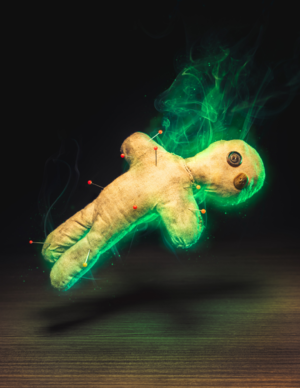Voodoo Priests
General Overview
Voodoo (Vodoun/Hoodoo/Vodou) was brought to French Louisiana during the colonial period by slaves from Sub-Saharan and West African regions from 1719-1731. Roughly fifteen percent of the population of Louisiana still practices it today.
The majority of the enslaved were the Fon people. Along with other slave groups, they brought their cultural practices, languages, and religious beliefs, all of which were rooted in spirit and ancestral worship. They had a keen knowledge of herbs, poisons, and the ritual creation of charms and amulets, which were the key elements to Louisiana Voodoo.
Louisiana Voodoo was also influenced by Haitian Voodoo when a large influx of slaves was brought to the region from Saint Domingue.
What led to its long-standing survival was that officials recognized the family groups under the French Catholic code of conduct. Unlike the American slave trade, they prohibited the sale of slave children until fourteen years of age, instead of selling the children at birth. Therefore the family connections, language, culture, and religion remained intact.
The heavily Catholic influence was incorporated into Louisiana Voodoo by the slaves through the use of prayer candles and crucifixes. The images of the Catholic saints inspired the creation of the Voodoo spirits. The Hail Mary and Our Father prayers are commonly used in Sanatoria, an offshoot of Voodoo.
Rituals
Bones, roots, and nails are often used to make charms, amulets, and voodoo dolls, which are part of the Haitian influence.
Singing and drum playing are vital parts of Voodoo rituals. The songs have been passed down orally for generations and are used to invoke the Loa (deities/spirits). This happens in four phases: preparation, invocation, possession, and farewell. The songs are used to open the gate between the deities and the human world, inviting the spirits to possess someone. These services are led by Voodoo Legba (Priest/Practitioners).
Offshoots
Hoodoo. Use of the gris-gris bag and sorcery
Sanatoria. Heavily Influenced by Catholicism
Lao
The Loa or Iwa are the spiritual deities, often referred to as the Mysteres and the Invisibles. There are roughly forty-five Loa in Voodoo. Listed below are the eight most influential Loa in the Voodoo faith.
Bondye. The Creator God, all the Loa serve as intermediaries between man and Bondye.
Papa Legba. God of the Crossroads, head intermediary, trickster, protector of children, and fertility. He is associated with the colors red and black.
Mama Brigitte. Wife/Consort of Baron Samedi, Goddess of the Hearth, and the Underworld. She is often associated with Saint Bridget and is seen as a pale skin woman with red hair.
Baron Samedi. God of Death and the Underworld, keeper of the cemeteries, leader of the Guede, family of Lao who works with the dead. He is often seen with a skeleton mask, top hat, and a black suit.
Erzulie. Goddess of Beauty and Love.
Ogun. God of Warriors, Blacksmiths, and the Wheel of Justice.
Damballah. God who assisted Bondye in the creation of the cosmos, and often represented by a massive serpent. He is the keeper of knowledge, wisdom, and healing magic. He is often associated with Saint Patrick.
Oshun. Goddess of Rivers, Streams, and Water.
Important Locations
Congo Square
